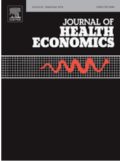Health Economics, vol. 14, pp. 69-82. (2005).
Autores: Jose-Luis Pinto-Prades y José-María Abellán-Perpiñán.
Summary
We report the results from two surveys designed to explore whether an application of Harsanyi’s principle of choice form behind a veil of ignorance (VEI) can be used in order to measure the health of populations. This approach was tentatively recommended by Murray et al.(Bull. World Health Organ 2000; 78: 981–994; Summary Measures of population health: Concepts, Ethics, Measurement and Applications, WHO, 2002.) as an appropriate way of constructing summary measures of population health (SMPH) for comparative purposes.
The operationalization of the VEI approach used in this paper was suggested by Nord (Summary Measures of Population Health: Concepts, Ethics, Measurement and Applications, WHO, 2002.). We test if VEI and person trade-off (PTO) methods generate similar quality-of-life weights. In addition, we compare VEI and PTO weights with individual utilities estimated by means of the conventional standard gamble (SG) and a variation of it we call double gamble. Finally, psychometric properties like feasibility, reliability, and consistency are examined. Our main findings are next: (1) VEI and PTO approaches generate very different weights; (2) it seems that differences between PTO and VEI are not due to the ‘rule of rescue’; (3) the VEI resembled more a DG than a classical SG; (4) PTO, VEI, and DG exhibited good feasibility, reliability and consistency.

